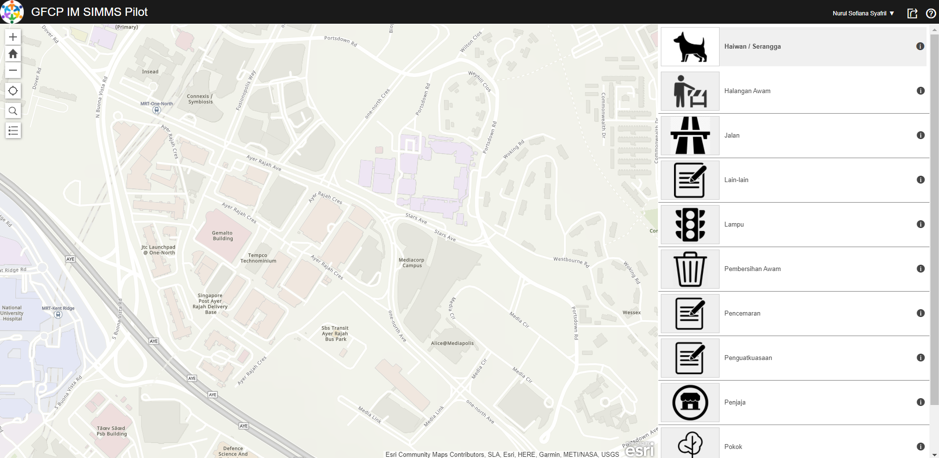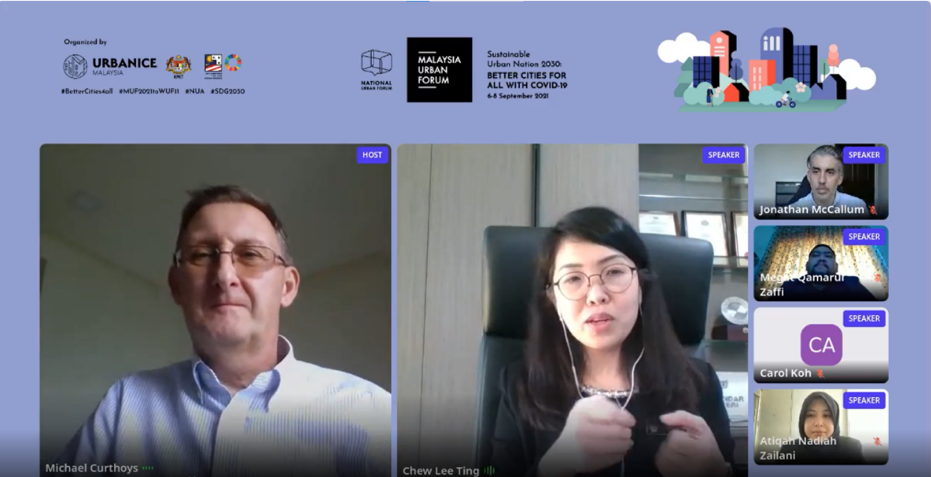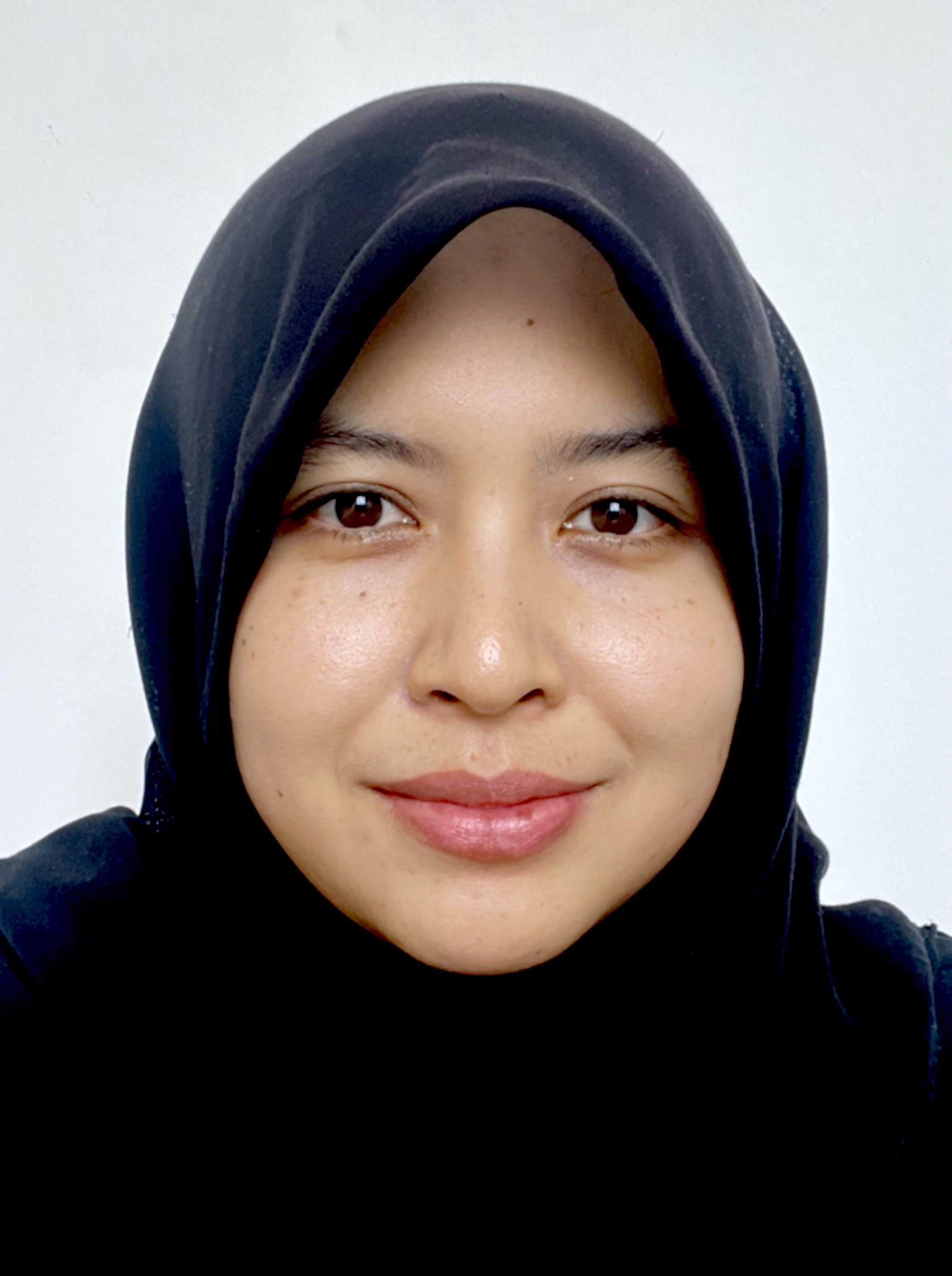Harnessing the power of data in Iskandar Puteri – from the lens of a city planner
“It really solved a real-world problem we were facing,” confirmed Chew Lee Ting, Head of the Development, Planning & Geographic Information System in Iskandar Puteri City Council (MBIP), when speaking of the recently-completed pilot project conducted by the Global Future Cities Programme (GFCP). “With the Citizen Feedback Portal developed in partnership with GFCP, we are confident that our citizens will be more willing and motivated to report issues for us to resolve”.
Previously, residents in Iskandar Puteri could lodge complaints through a number of ways: WhatsApp, iTegur application and telephone calls to the office. All these would be logged in the existing public complaints management system (SisPAA) system used by the Government of Malaysia. However, the system did not allow users to log the location and other details of the problem, making it difficult for authorities to correctly identify where to go and what to fix. In addition, data was lost when migrating from the applications to the SisPAA system, further worsening the lack of clarity.
Seizing on this opportunity to improve the situation and at the same time demonstrate the benefit of evidence-based urban planning, the GFCP team worked hand-in-hand with MBIP to develop a two-pronged solution: a Citizen Feedback Portal for the general public and a SisPAA Dashboard for the authorities.
 A sample snapshot of the Citizen Feedback Portal and list of complaint categories
A sample snapshot of the Citizen Feedback Portal and list of complaint categories
The Citizen Feedback Portal acts as an additional convenient channel for users to submit complaints, but with additional features that make it more convenient than the other existing channels. Firstly, the system allows user to pinpoint the exact location of the issue and upload details and photos for more clarification. Secondly, the portal allows users to review existing complaints, and to comment and vote on those submitted by others, which means the community can interact and vote pertinent issues up the rank for the authorities to prioritize. More importantly, the portal is accessible on various devices including smartphones, tablets and desktop computers, and requires no installation or registration, widening the reach among the citizens, notably those within the 12-40 age group who are tech-savvy.
On the back-end, where Ms. Chew and her team sit, a SisPAA dashboard allows for customization of the interface according to the needs of the city council. The dashboard pulls from the SisPAA database and presents the data in a more visual and easily understandable format. The data analytics allow for ease of monitoring, decision-making and action by the city council. “We believe everything happens somewhere in the city,” Ms. Chew shared, “this project has been a good demonstration on how the city council can be more creative in expanding our services, and on how the technology can assist us to effectively visualize our data and increase the communication and coordination across departments.”
 A snapshot of the SisPAA dashboard for city councils to visualize the collected
A snapshot of the SisPAA dashboard for city councils to visualize the collected
Beyond the accelerated approach to receiving and resolving public complaints, the data can also be used for quality-of-life analyses for each administrative zones, and will provide insights to the management in MBIP for improved planning, resource allocation and development. In the long run, this will reduce MBIP’s long-term asset maintenance costs, and pose no conflict or redundancy with existing systems.
Ms. Chew was happy to share that the city council has received the green light to adopt the Citizen Feedback Portal as our feedback channel in August, after successfully passing a few rounds of internal user experience testing. “We will rebrand with a more localised name that’s easy to remember, and plan to launch it to the public in November 2021. After six months, we will collect feedback from the users and check for areas to further improve the system.”
“My experience tells me that our stakeholders and users will need around 2 years to get used to the new system and engage with it,” Ms. Chew stated, “but certainly continuous enhancement and further improvement will be needed to sustain the use of the system and to keep pace with the changing lifestyles of our citizens.”
“But for now,” she concluded, “the Citizen Feedback Portal makes it easier for our citizens from various levels of society to reach us, and the SisPAA Dashboard helps to increase the performance of our internal departments to act on the complaints.”
Ms. Chew has gone on to share her team’s experience with the public at the Malaysia Urban Forum 2021, and is keen to further encourage the adoption of similar technology and data-utilization by other local authorities in Malaysia.

The UK Prosperity Global Future Cities Programme (GFCP) is working with the Iskandar Regional Development Authority (IRDA) and stakeholders to develop long-term solution to optimize the transport & mobility system to support the rapid population growth in Iskandar Malaysia. A coordinated mobility strategy will enable better-informed urban and transport planning decisions in fast-growing Iskandar Malaysia through two interventions:
- Smart Integrated Mobility Management System (SIMMS) Implementation Strategy
- Creating enabling conditions for data utilization & management for Evidence-based Urban and Transport Planning (E-bUTP)
Partner
Mott MacDonald (MM)
Country
Malaysia
City
Iskandar Malaysia
Themes
Data-Driven Process and Management
Social Inclusion
Author(s)

Atiqah Zailani
UN-Habitat Local Strategic Advisor for the Global Future Cities Program, Malaysia